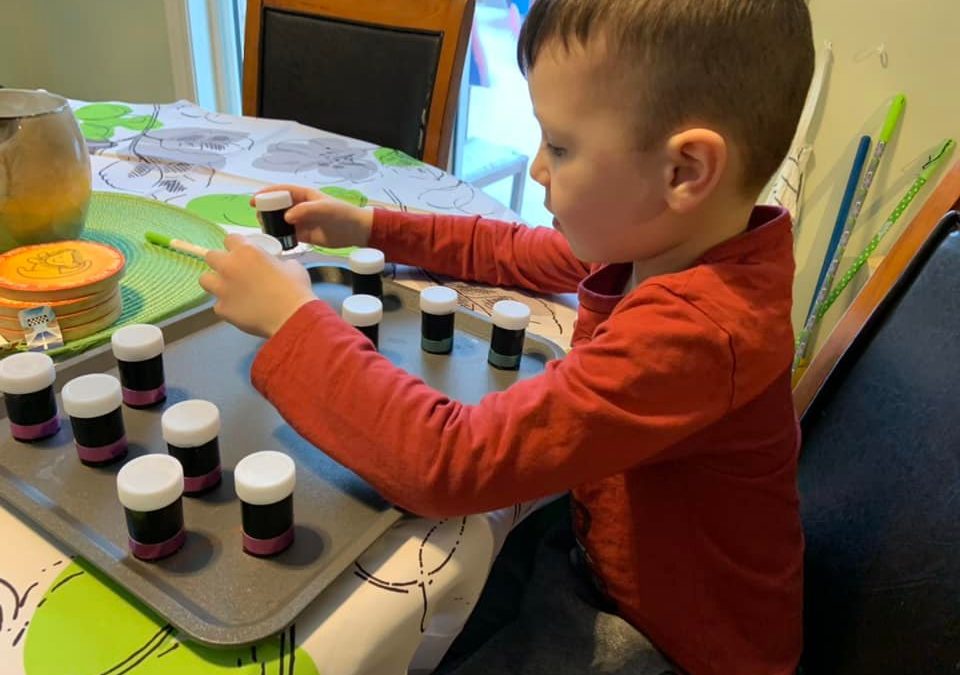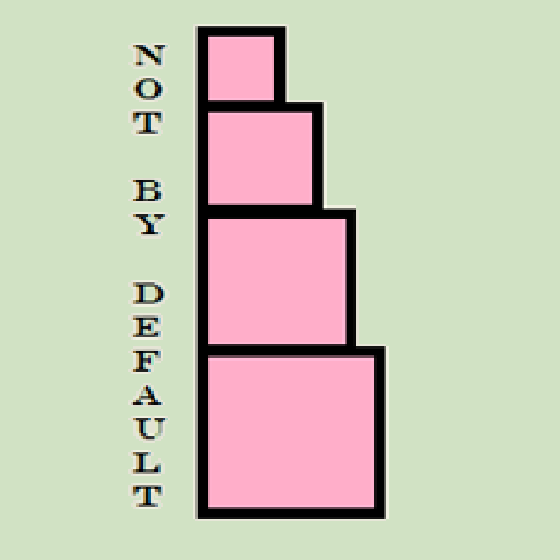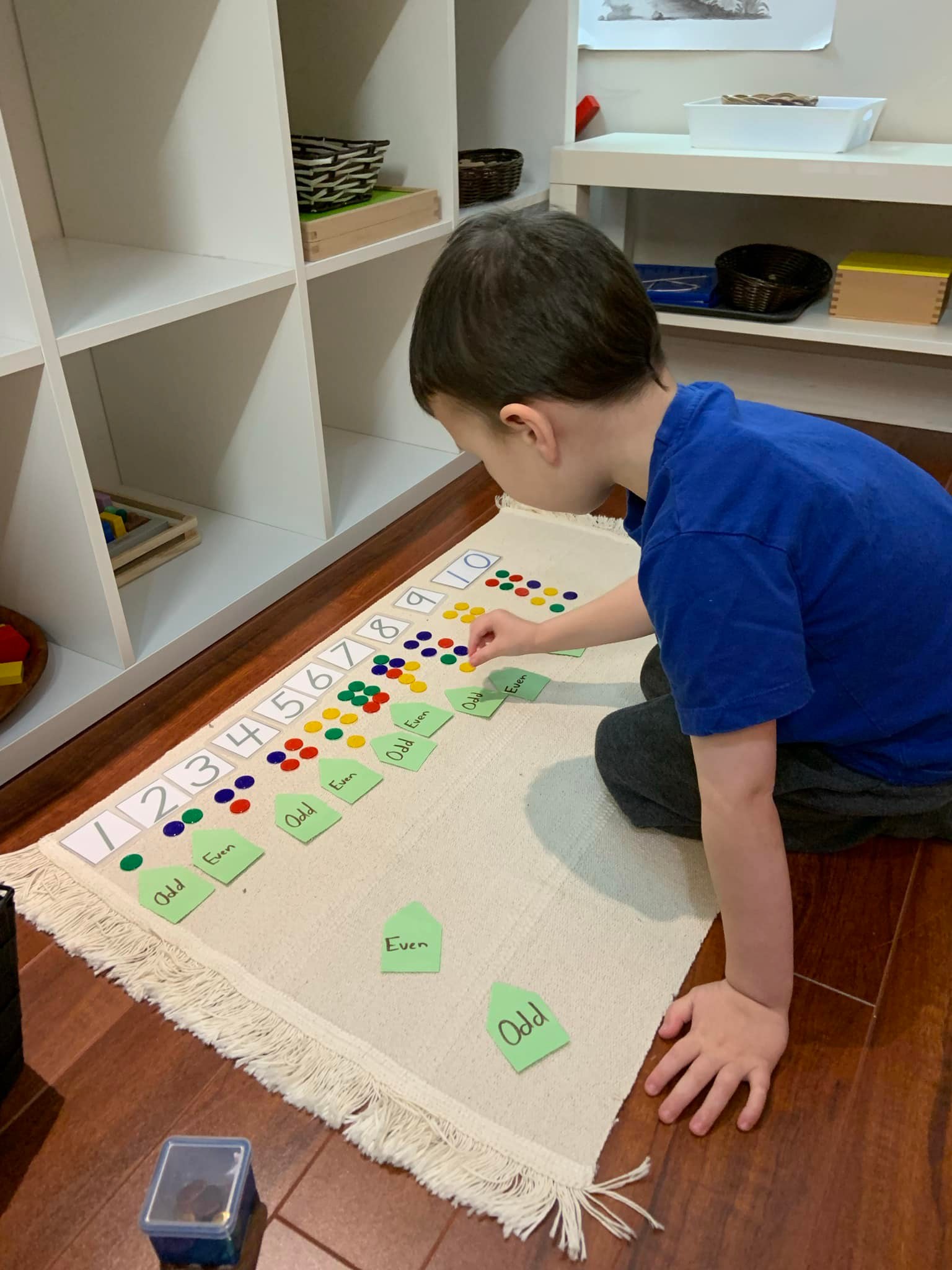
Montessori Sound Cylinders DIY

Today I want to talk about an extremely easy DIY version of a classic Montessori material called the Sound Cylinders or Sound Boxes. In the classic material you would have two sets of six wooden cylinders. One set would have a red top, and one set would have a blue top. The goal of the material is to have the child match the red and blue cylinders into pairs that create the same sound when shaken. There are actually a number of other activities that can be done with the cylinders but this is the activity that seems to be the best known. A key part of the material is a small colored dot on the bottom of the cylinders. Each pair of cylinders has a matching dot or number on the bottom to allow for the child to self correct as they work. When I decided to DIY this activity I picked up a set of plastic containers from the Dollar Tree and everything else I used I already had on hand.
The containers I found were transparent so my first step was to cover the containers in tape so that my kids would not be able to see the contents. We want to isolate the skill of auditory discrimination rather than having the child simply match by visuals. Once the containers were covered I used washi tape in two different colors to mark my different sets. I then put matching stickers on the bottoms to mark my pairs. Finally I filled the containers with different fillers- beans, lentils, quinoa, rice, and beads. Make sure your matching containers have the same amount of filler in them or it will impact the sound and they will not match. I also hot glued my containers shut because of the younger kids I have in my home, but if I was making this for a home with preschoolers and up I would have left them unsealed, leaving the option open to change the sounds and even have the children change it up themselves!
This is a fun little activity and only takes ten minutes to assemble. I do not think it is worth the $35 my local Montessori store is asking for it, but for the $1.25 I spent on my DIY definitely worth it! Now that Mr. Man has mastered the matches I have actually been thinking I may switch out my color match stickers on the bottom for numbers. This would allow the activity to also be self correcting in arranging the cylinders from softest to loudest. The reason I went with colors initially was because Little Miss is not familiar with number symbols yet, but I have noticed she does not care to self correct anyways. She prefers to work on them together at the moment and so that leaves me space to adjust them for my four year old’s needs.




